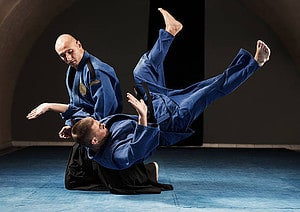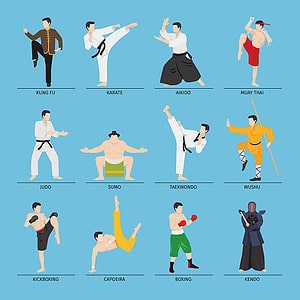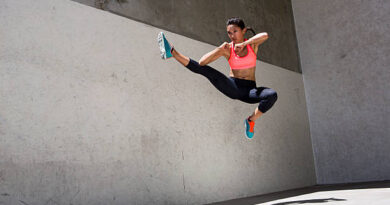How does body size and weight influence the choice of martial arts
Table of Contents
-
- How Body Size and Weight Affects the Choice of Martial Arts
- The Benefits of Martial Arts for Different Body Types
- How to Choose the Right Martial Arts for Your Body Type
- The Impact of Body Size and Weight on Martial Arts Performance
- How to Maximize Your Martial Arts Performance Regardless of Body Size and Weight
How Body Size and Weight Affects the Choice of Martial Arts
The choice of martial arts is an important decision for any individual, and body size and weight can play a significant role in the selection process. Different martial arts have different requirements for body size and weight, and it is important to consider these factors when selecting a martial art.
For individuals who are smaller in stature, martial arts such as judo, aikido, and tae kwon do may be the best choice. These martial arts emphasize the use of leverage and technique over strength and power, making them well-suited for smaller individuals. Judo, in particular, is a great choice for smaller individuals, as it focuses on throws and joint locks rather than strikes.

For individuals who are larger in stature, martial arts such as boxing, kickboxing, and Muay Thai may be the best choice. These martial arts emphasize the use of power and strength, making them well-suited for larger individuals. Boxing, in particular, is a great choice for larger individuals, as it focuses on punches and combinations rather than throws and joint locks.
For individuals who are of average size and weight, martial arts such as karate, kung fu, and Brazilian jiu-jitsu may be the best choice. These martial arts emphasize the use of both technique and power, making them well-suited for individuals of average size and weight. Karate, in particular, is a great choice for individuals of average size and weight, as it focuses on strikes and blocks rather than throws and joint locks.
In conclusion, body size and weight can play a significant role in the selection of a martial art. It is important to consider these factors when selecting a martial art, as different martial arts have different requirements for body size and weight. By taking these factors into account, individuals can ensure that they select the martial art that is best suited to their body size and weight.
The Benefits of Martial Arts for Different Body Types
Martial arts are an excellent form of physical activity for people of all body types. Not only do they provide a great workout, but they also offer a variety of benefits that can help people of different body types. Here are some of the benefits of martial arts for different body types.
For those with a larger body type, martial arts can be a great way to get in shape and lose weight. Martial arts involve a lot of physical activity, which can help burn calories and build muscle. Additionally, martial arts can help improve balance and coordination, which can be especially beneficial for those with a larger body type.
For those with a smaller body type, martial arts can be a great way to build strength and confidence. Martial arts involve a lot of physical activity, which can help build muscle and improve overall fitness. Additionally, martial arts can help improve coordination and agility, which can be especially beneficial for those with a smaller body type.
Overall, martial arts can be a great form of physical activity for people of all body types. Not only do they provide a great workout, but they also offer a variety of benefits that can help people of different body types. Whether you have a larger, smaller, or medium body type, martial arts can be a great way to get in shape and improve overall health.
How to Choose the Right Martial Arts for Your Body Type
When it comes to choosing the right martial art for your body type, there are a few important factors to consider. First, it is important to understand the different types of martial arts and how they can benefit your body type. Different martial arts have different physical requirements, so it is important to find one that is suitable for your body type.
The most popular martial arts are Karate, Judo, Taekwondo, and Brazilian Jiu-Jitsu. Karate is a striking art that focuses on punches, kicks, and blocks. It is a great choice for those with a strong upper body and good balance. Judo is a grappling art that focuses on throws, pins, and submissions. It is a great choice for those with a strong lower body and good flexibility. Taekwondo is a striking art that focuses on kicks and blocks. It is a great choice for those with a strong lower body and good balance. Brazilian Jiu-Jitsu is a grappling art that focuses on submissions and ground fighting. It is a great choice for those with a strong upper body and good flexibility.
When choosing the right martial art for your body type, it is important to consider your physical abilities and limitations. If you have a strong upper body, then Karate or Taekwondo may be the best choice for you. If you have a strong lower body, then Judo or Brazilian Jiu-Jitsu may be the best choice for you. If you have good balance and flexibility, then any of the four martial arts may be suitable for you.
It is also important to consider your goals when choosing the right martial art for your body type. If you are looking to compete in tournaments, then Karate or Taekwondo may be the best choice for you. If you are looking to learn self-defense, then Judo or Brazilian Jiu-Jitsu may be the best choice for you.
Finally, it is important to find a martial arts school that is suitable for your body type. Different martial arts schools have different teaching styles and philosophies, so it is important to find one that is suitable for your body type.
By considering your physical abilities and limitations, your goals, and the teaching style of the martial arts school, you can find the right martial art for your body type. With the right martial art, you can reach your goals and enjoy the benefits of martial arts training.
The Impact of Body Size and Weight on Martial Arts Performance
The impact of body size and weight on martial arts performance is an important factor to consider when engaging in any type of martial arts. Body size and weight can have a significant effect on the effectiveness of a martial artist’s technique, as well as their overall performance.
Body size and weight can affect the speed and power of a martial artist’s strikes, as well as their ability to move quickly and efficiently. A larger body size and weight can provide a martial artist with more power and momentum, allowing them to generate more force with their strikes. However, a larger body size and weight can also make it more difficult to move quickly and efficiently, as the martial artist must carry more weight and mass.
In addition, body size and weight can also affect the martial artist’s ability to defend themselves. A larger body size and weight can provide a martial artist with more protection from strikes, as the larger body mass can absorb more of the impact. However, a larger body size and weight can also make it more difficult to move quickly and efficiently, as the martial artist must carry more weight and mass.
Finally, body size and weight can also affect the martial artist’s ability to grapple and perform ground techniques. A larger body size and weight can provide a martial artist with more leverage and control when grappling, as the larger body mass can provide more stability and support. However, a larger body size and weight can also make it more difficult to move quickly and efficiently, as the martial artist must carry more weight and mass.
Overall, body size and weight can have a significant impact on a martial artist’s performance. While a larger body size and weight can provide a martial artist with more power and protection, it can also make it more difficult to move quickly and efficiently. Therefore, it is important for martial artists to consider their body size and weight when engaging in any type of martial arts.
How to Maximize Your Martial Arts Performance Regardless of Body Size and Weight
Regardless of body size and weight, martial arts practitioners can maximize their performance by following a few simple steps.
First, it is important to understand the basics of martial arts. This includes learning the fundamentals of the martial art, such as stances, blocks, strikes, and kicks. Practicing these techniques regularly will help to build strength and agility, which are essential for martial arts performance.
Second, it is important to develop a strong foundation of physical fitness. This includes strength training, cardiovascular exercise, and flexibility training. Strength training should focus on building muscle mass and power, while cardiovascular exercise should focus on improving endurance and stamina. Flexibility training should focus on improving range of motion and mobility.

Third, it is important to practice proper nutrition. Eating a balanced diet that is rich in protein, carbohydrates, and healthy fats will help to fuel the body and provide the energy needed for martial arts performance. Additionally, it is important to stay hydrated and get adequate rest.
Fourth, it is important to practice visualization and mental preparation. Visualizing success and positive outcomes can help to increase confidence and focus. Additionally, it is important to practice positive self-talk and to stay motivated.
Finally, it is important to practice regularly. Practicing martial arts techniques and drills on a regular basis will help to improve technique and performance. Additionally, it is important to practice with a partner or in a group setting to help improve coordination and timing.
- By following these steps, martial arts practitioners of any body size and weight can maximize their performance. With dedication and hard work, martial arts practitioners can reach their full potential and become successful martial artists.




